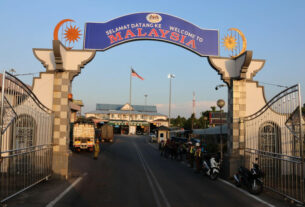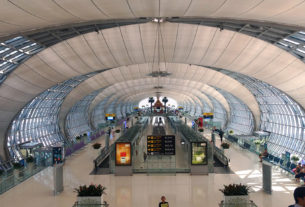Thailand may welcome more coal-fired power plants and even nuclear power in the next 20 years under the new Power Development Plan, according to the newly appointed director-general of the Energy Policy and Planning Office.
Samerjai Suksumek said yesterday that more coal and nuclear plants were among the options in the PDP 2013 (2013-2033) to reduce the country’s dependence on natural gas.
Under the current PDP, Thailand aimed to generate 13,000 megawatts from natural gas. Under the first option in the new plan, coal and nuclear would take on 2,000MW from natural gas, along with additional power purchases from neighbouring countries. Samerjai believes this option would ensure that the average electricity cost during the
20-year period would be Bt4.50 per unit, lower than cited in the previous plan, thanks to the lower cost of coal and nuclear.
In the second option, in which nuclear power is ruled out, the 2,000MW would be generated by renewable energy sources such as Napier grass.
Moreover, if the Electricity Generating Authority of Thailand cannot construct a new coal-fired power plant in Krabi, another round of bidding to buy electricity from independent power producers will be called, or Thailand will have to buy even more power from overseas providers.
Under the current plan, natural gas accounts for 54 per cent of power generation; coal 11 per cent; alternative energy 14 per cent; nuclear 3 per cent; hydropower 6 per cent; and overseas suppliers 12 per cent. Under the new plan, the natural-gas proportion will fall, while those of coal and overseas supply will rise.
Despite the lower gas contribution, PTT will be required to continue importing liquefied natural gas, Samerjai said.
Against fears that higher reliance to overseas-sourced power could jeopardise national energy security, he insisted that experiences in Europe during World War II proved otherwise. Despite the war, power supplies were not disrupted.
He also quashed the expectation that the planned high-speed rail system would boost electricity demand.
“We don’t expect that to happen. As such, the power-generation plan in the new PDP should remain the same, with about 55,000MW in total installed capacity in 2033. The only difference is that in lieu of gas-fired plants, which are more costly, there will be more coal-fired power plants and more supplies from neighbouring countries,” he said.
Samerjai also foresees the opportunity for Thailand to become an electricity-trading hub, thanks to the transmission linkages with other Asean nations and China.
The PDP 2013 lays out the outlook for electricity generation plan from this year through 2033. It will replace the existing PDP, which has been revised three times. The last revision took place in 2010 to reflect the government’s policies to boost the proportion of renewable energy to 25 per cent of power consumption and to introduce more electricity-driven mass-transit routes.
The PDP 2013 should be ready for the National Energy Policy Council’s consideration by the end of the year.

